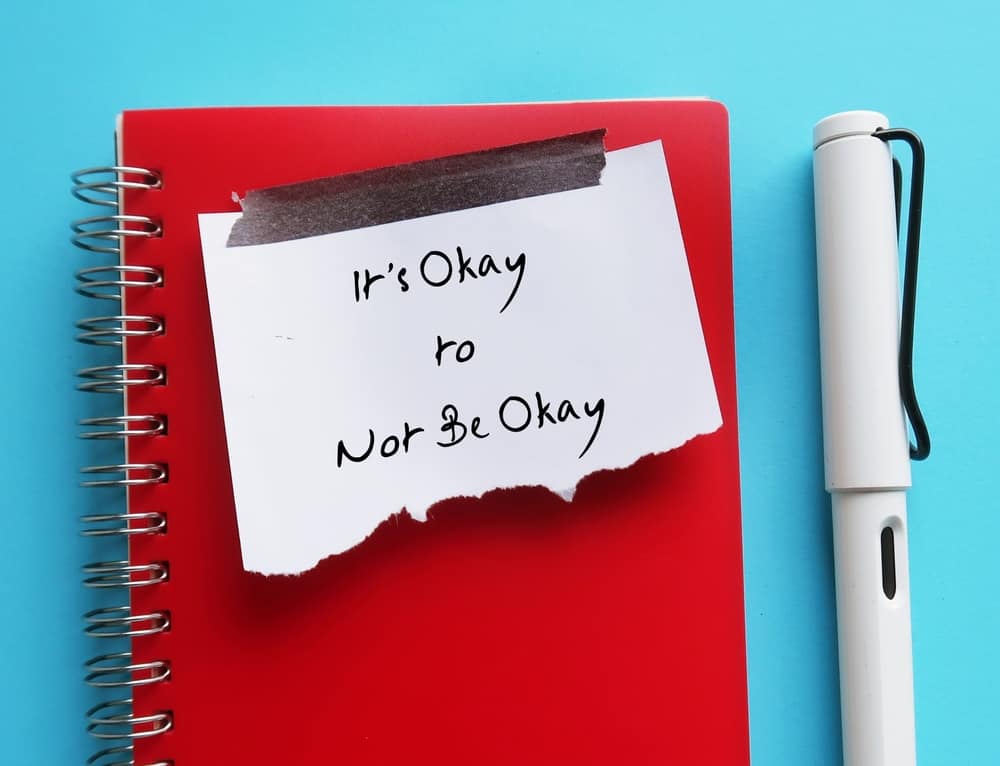It’s Okay Not to Be Okay – Until It’s Not
CONTENT NOTE: mental health disabilities, brief mention of suicide and suicidal ideation
Even before the COVID-19 pandemic emerged, the United States was facing a growing mental health emergency. This rapidly-growing crisis has led to mental health becoming a more common topic of conversation in schools and communities, particularly in reference to the increase of mental health disabilities.
With this budding conversation, Gen Zers have begun to dismantle saneism, a specific kind of ableism against mental health disabilities and those with them, that is rampant in our culture. From teenagers around the country to celebrities, the phrase “It’s okay to not be okay” was embraced.
While the topics of mental health and mental health disabilities spread throughout the education field, it was discussed largely in relation to student and youth mental health. Teachers and educational staff began receiving more training focused on: recognizing signs and symptoms of mental health challenges in students, how to talk about suicide and suicidal ideation with students, and how to infuse social-emotional teaching in curriculums to address student mental health.
The increase in training for teachers is particularly paramount in the field of special education, since we work with students with a variety of disabilities, including mental health disabilities and other disabilities that may impact their mental health. As special education teachers, we learn how to support students with disabilities and their families. We learn to teach students how to advocate for themselves, how to employ self-care skills, and how to ask for help, among other things. We ensure that students know that it’s okay to need support, to not be okay.
Yet, if you examine the teaching field, this strengths-based approach to supporting individuals with disabilities isn’t practiced with educators. The field of teaching is mostly devoid of teachers who disclose their disabilities. This is not at all reflective of the data, which shows that 61 million U.S. adults—1 in 4—live with a disability. These numbers are probably much higher, given that many individuals may choose not to disclose their disability or may have undiagnosed disabilities. If educators do disclose, they are often doubted and stigmatized. I am all too familiar with this reality because it happened to me.
My story is a complicated one, as so many are, full of internalized ableism and shame. I’ve struggled with a variety of mental health conditions over the course of my life. I majored in education, as I longed to be an early childhood special education teacher. During my senior year, my mental health challenges grew to the extent that I required additional support.
I was fortunate to have a team of professors, higher education staff, doctors, and dedicated friends who rallied behind me, providing me with the tools and supports I needed to thrive. I graduated from undergrad, entered the education field, and returned to graduate school to obtain a master’s degree in special education.
Towards the end of graduate school, I was faced with surmounting events that would shake the sturdy foundation I’d worked so hard to build and maintain. At the time, I was working as a teaching assistant, supporting students with medical complexities and rare disabilities. I lost several preschool students as a result of their conditions as well as a few campers from a summer camp I’d worked at for many years.
As I was preparing to move across the country to take care of my ailing father, my grandmother passed away. I was unable to attend her funeral, as it landed on the same day as my cross-country move. When I arrived in California, my dad’s health was up and down. At the same time, I continued to lose students from my former teaching job on the East Coast. But I started a new job as a special education teacher and hoped for the best.
Just a few months after my grandmother passed, my dad was in the ICU in California, and I was on the brink of a breakdown. The compounding grief led to a level of anxiety and fear that felt insurmountable. I knew that I needed to take a break before my mental health fell apart.
With the support of my doctors, I was granted a six-week, short-term disability leave. I obtained all the necessary paperwork and submitted it to my employer. My plan was to take a break, focus on my mental health, and return to the classroom in six weeks, hopefully feeling more grounded.
Within a day of submitting this paperwork to my employer, however, I received an email notifying me that my medical leave was denied. I was told that I either had to return to work that week or resign. At first, I thought that this was illegal. However, my employer considered my request for short term leave an unreasonable accommodation. Without paying for legal council of my own to fight their decision, I had to accept it. Illegal or not, it felt like a slap in the face.
I wondered why we work so hard as teachers to advocate for our students when advocating for ourselves can have such detrimental consequences. I had to choose: my health or my job. For once in my life, I chose me. And that is how my career as a teacher came to an abrupt end.
The field tells educators that mental health is important—for their students and for them. The field encourages a healthy work-life balance. Yet, if an educator discloses a mental health disability or need for accommodation, it is often dismissed, stigmatized, or denied.
Since my dad passed away in late summer 2021, I have participated in several online grief groups and a variety of mental health support groups. I have heard so many stories of teachers saying that they have to be “good examples” for the children. They can’t afford to lose their jobs, so they can’t take time off of work to get help. But what kind of message is this sending to our teachers and our children?
First of all, this message communicates that our teachers’ mental health is not as critical as our children’s. That is problematic because teachers cannot be their best selves if they do not first care for themselves. Children are curious and observant. They may notice changes in their teacher’s mood or behavior, but may not be able to verbalize their concerns or identify why. This can lead children to believe that they are the problem, possibly leading them to internalize and blame themselves for the changes that they experience.
Equally important, this communicates to our students that they can have mental health disabilities, but that teachers cannot. In essence, we are telling our youth with mental health disabilities that they can never be teachers—or many other professions—because of their disability. Or we demonstrate that they need to hide their disability if they want to pursue certain careers. The ableism inherent in this is incredibly troublesome.
We know that disability representation matters. This includes representation in education, particularly in special education. We must do better. We must work for a world where disabled children see individuals like themselves represented in various professions. They must learn that mental health disabilities should not preclude them from having fulfilling lives and giving back to their communities, regardless of what profession they choose.
It is okay for teachers to not be okay. We must allow teachers to be human and provide the right protections, systems, and supports so that teachers can care for themselves and, by extension, their students. These do not need to be mutually exclusive, as it is now. We must create a world where we support the mental health of teachers AND students.
But before we can do that, we need to acknowledge that this problem exists, and take the necessary steps to create a world where teachers aren’t afraid to be vulnerable. I hope that my story can help other teachers know they are not alone. The more we share our stories, our truths, the closer we come to dismantling the rampant ableism and saneism that infiltrate education.
About Rooted In Rights
Rooted in Rights exists to amplify the perspectives of the disability community. Blog posts and storyteller videos that we publish and content we re-share on social media do not necessarily reflect the opinions or values of Rooted in Rights nor indicate an endorsement of a program or service by Rooted in Rights. We respect and aim to reflect the diversity of opinions and experiences of the disability community. Rooted in Rights seeks to highlight discussions, not direct them. Learn more about Rooted In Rights



